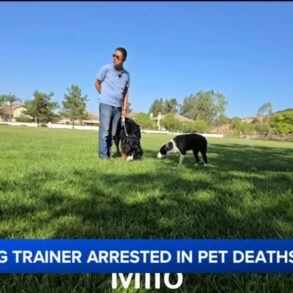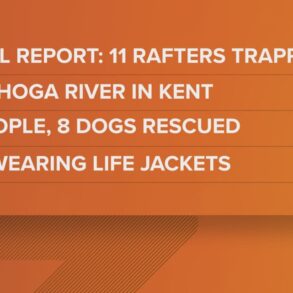As a neurological disease fatal to deer and elk continues to spread in the West, new research suggests dogs — and particularly their noses — could be an effective management tool.
Chronic wasting disease (CWD) was first detected in a deer in Colorado in 1967. It’s now in 35 U.S. states, with recent first-time cases found in Idaho in 2021, Yellowstone National Park in 2023 and Washington State this month.
The disease, with a 100% mortality rate for animals in the deer family, causes natural proteins in the body called prions to transform into abnormal shapes, destroying the nervous system.
It also alters an animal’s microbiome, said Glen Golden, a neurobiologist.
“And once it changes it, it also changes its odor profile,” he added.
Dogs can sniff out that altered odor profile, according to a new study published in the journal PLOS ONE by Golden and researchers at Colorado State University and the National Wildlife Research Center in Fort Collins.
The team trained six dogs to sit next to black boxes containing vials of fecal samples from CWD-infected wild and farmed white-tailed deer and to ignore boxes with samples from healthy deer.
In each trial, one out of five randomly placed boxes held the positive sample, so a 20% accuracy rate would have resembled chance. The dogs correctly sat next to the CWD samples about 85% of the time.
“It shows us that they’re actually capable of making this infection-status decision,” Golden said.
Get top headlines and KUNC reporting directly to your mailbox each week when you subscribe to In The NoCo.
The team next tested the dogs’ noses on deer GI tract samples. They correctly identified CWD positives with 79% accuracy. To Golden, this suggested that dogs could generalize the odor profile learned from fecal samples to other tissues.
That might be useful to wildlife managers in the field, he said. Most states test for CWD by taking samples from hunted animals.
“When the hunters bring their deer into hunter check stations, you could run a dog over these deer, or the heads of the deer, or something along that line, and be able to tell which deer had been infected by CWD,” Golden said.
It could alert managers of infected animals faster than lab results could confirm. However, dogs are not currently employed for CWD management in the field because their effectiveness in real-world settings has not been thoroughly studied.
Yet, to Amritha Mallikarjun, this new study offers additional confirmation that there is an odor associated with CWD that dogs can smell. Mallikarjun, a post-doctoral researcher at the University of Pennsylvania’s Working Dog Center, published similar research last year using fecal samples from white-tailed deer.
She noted that her study also yielded promising results, though it involved different settings with distinct training methods.
“That really confirms that the use of CWD detection dogs could be a very important tool for CWD surveillance and management,” she said.
Mallikarjun’s team believes that if dogs can hunt out the smell of feces from CWD-infected deer, it could give wildlife managers a novel tool to surveil the environment and identify boundaries of CWD illness. The University of Pennsylvania is currently working with the state’s game commission to train dogs for this purpose and will monitor the results.
This story was produced by the Mountain West News Bureau, a collaboration between Wyoming Public Media, Nevada Public Radio (KNPR) in Las Vegas, Boise State Public Radio in Idaho, KUNR in Nevada, KUNC in Colorado and KANW in New Mexico, with support from affiliate stations across the region. Funding for the Mountain West News Bureau is provided in part by the Corporation for Public Broadcasting.
This post was originally published on this site be sure to check out more of their content.












































